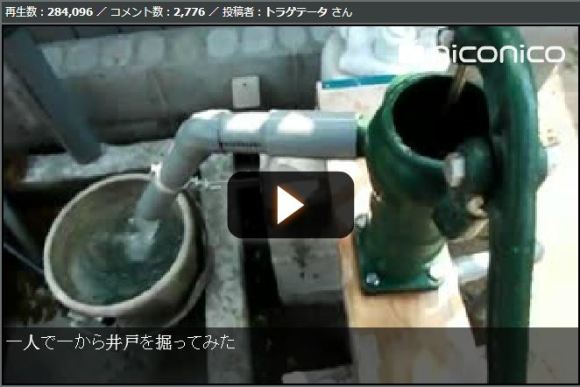
Have you got what it takes to dig your own private well? Well, to be honest, the thought has never really crossed our minds before, but after watching this video we’ve sure been inspired to try (sounds like a good summer project for Mr. Sato). We’ve also learned that well-digging is not for the faint of heart. Here’s the video journal of one man’s long journey to create a well in his backyard over the course of a summer. His adventure was full of ups and downs and many frustrating moments, but the end result was worth all of the trouble, not to mention making surprisingly interesting watching. Join us after the jump for a slideshow of this strenuous undertaking!
The man who dug a well by himself uploaded a video of the entire process on popular Japanese video-sharing site Niconico. Here’s his full video, set to some trippy Vocaloid background music:
We took screenshots of all of the photo slides and translated his comments below. Sit back, relax, and enjoy the show!
He begins the slideshow with the ominous introductory line, “The summer that the water bill was over 30,000 yen.”
I got the idea to build a well in my garden. I found a book called “Do it yourself: How to dig a well” on Masami Sokabe’s homepage. That same day I ordered the book and necessary materials. This video documents the process and hardships that I underwent over the one year it took to complete my well.
▼First, the materials. These 9-cm (in diameter) polyvinyl chloride (PVC) pipes will become the main structure of the well.
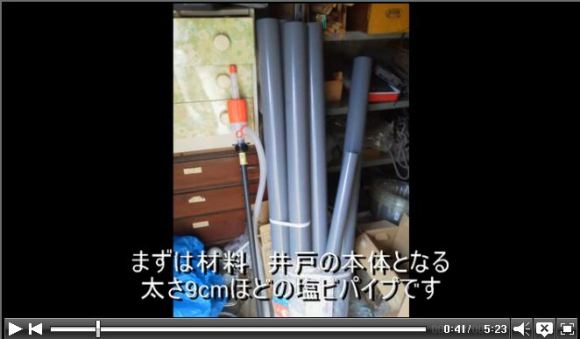
▼Connect the sockets together as you go, you will pound several meters’ worth of them deeply into the ground.
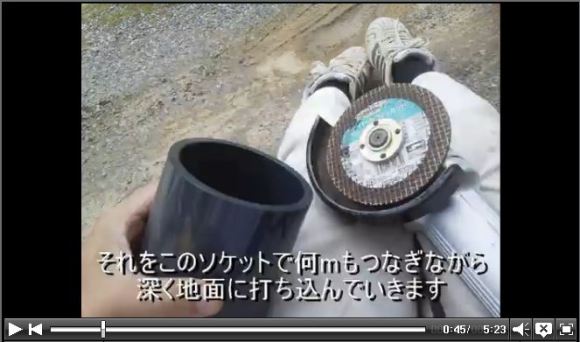
▼Sharpen the edge of only the first pipe so that it becomes jagged.
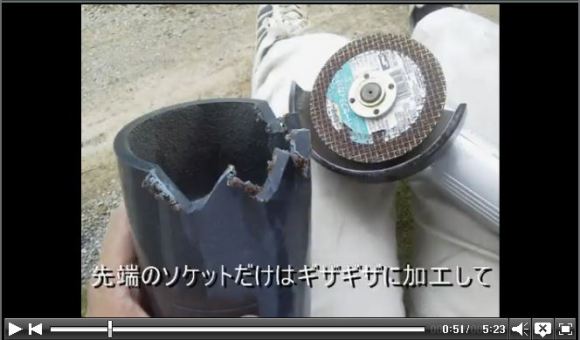
▼That will make it easier to drive into the ground.
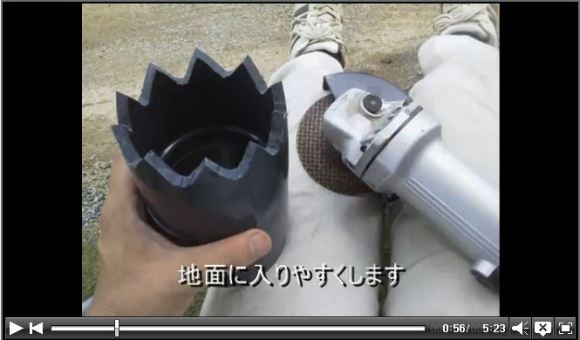
▼Open countless little holes in the first pipe.
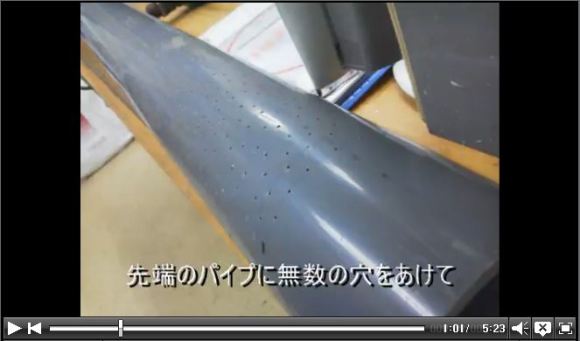
▼The docking pipe is now finished. You will gradually pound it pointy-end first into the ground.
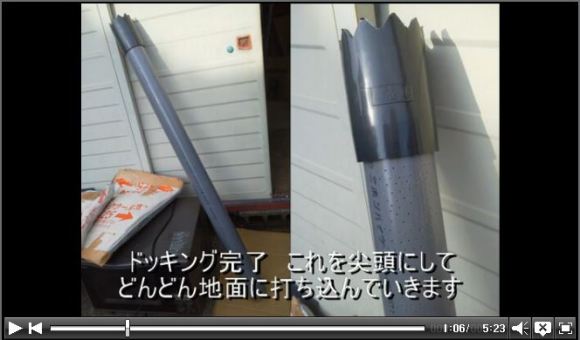
▼The pipe is about one meter long, a reasonable length.
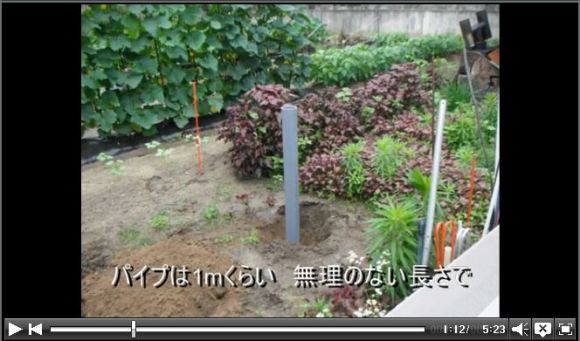
▼Hang cinder block weights from the pipe.
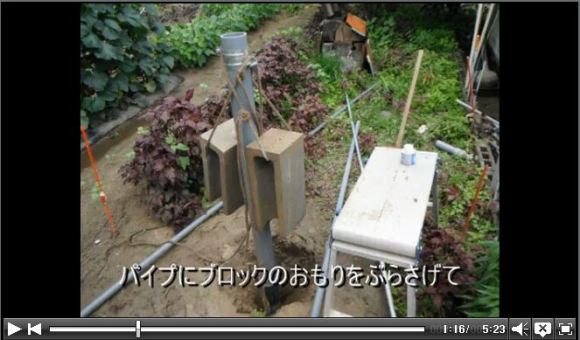
▼Begin to hammer it into the ground with a mallet.
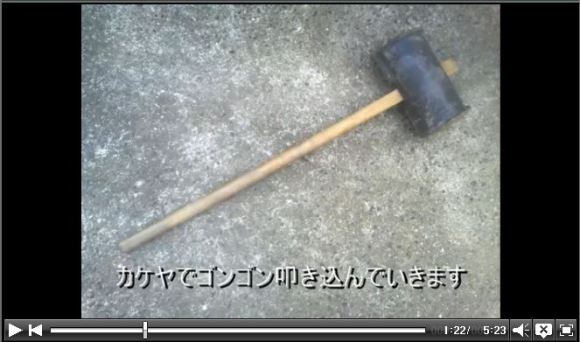
▼Whenever the pipe becomes short while you are driving it in…
▼…remember to sometimes scoop out the mud inside the pipe with a pointed iron pipe or something similar.
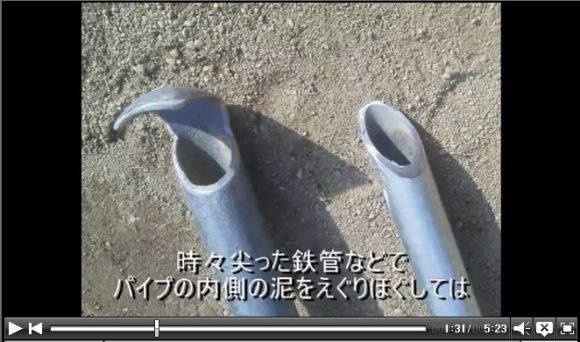
▼Collect the water in some kind of container on the earth’s surface.
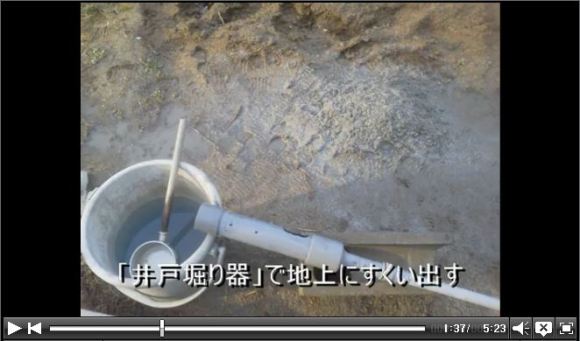
Repeat this action many times. Drive the pipe further and further in until water appears.
▼You won’t find water at the layer of hard clay. Continue digging deeper, and before you know it…
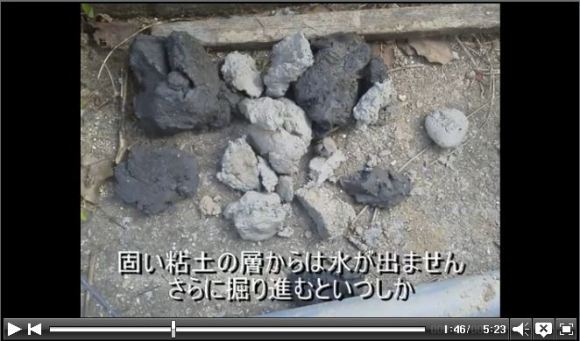
▼…you will reach a layer of beautiful sand. Underground water is flowing there.
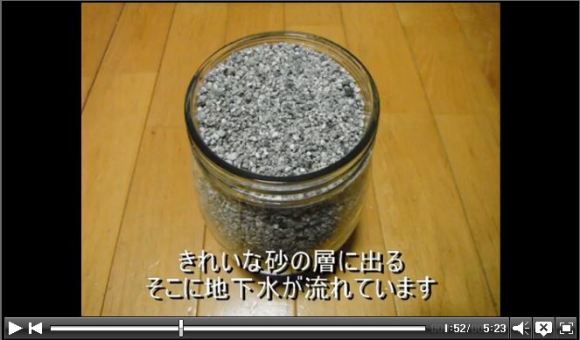
▼You should anchor the end of the pipe precisely in this permeable layer.
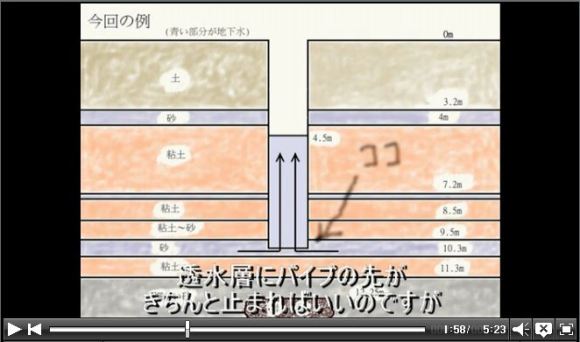
▼If you carelessly pound it too far, you may go beyond the sand layer by mistake.
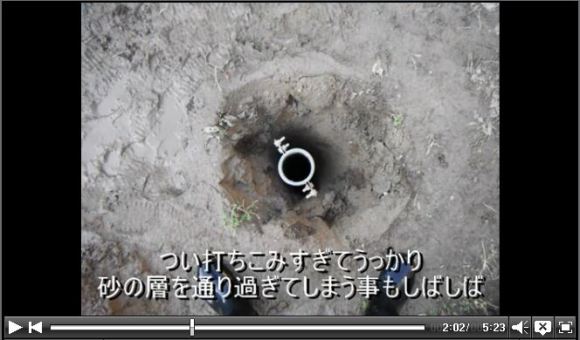
▼If you have really bad luck, even if you dig and dig you will only find the clay layer.
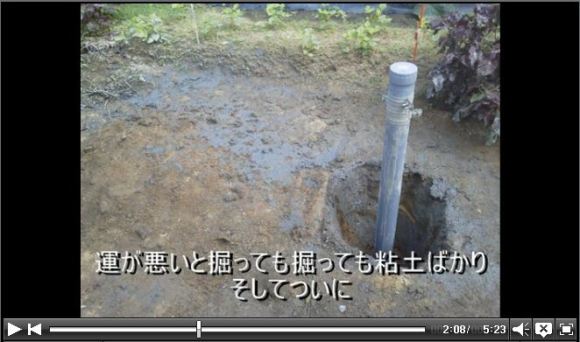
▼When I reached a depth of 7.5 meters, my mallet broke.
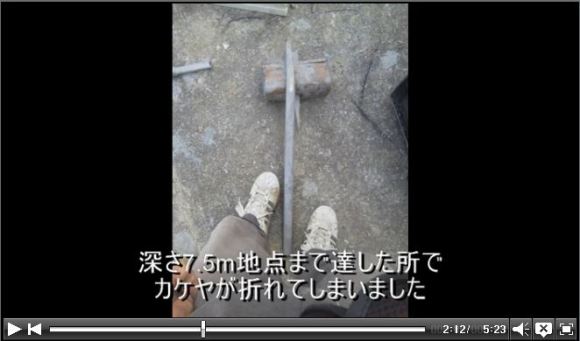
▼MY MALLET BROKE!!

This setback came only nine days after beginning the ordeal. After recovering for half a year, I resumed the excavation operation.
▼It was great to rest and get a fresh start. I was once again making progress, but…
▼…at a depth of 12 meters, I hit bedrock and couldn’t go any further.
▼I tried pumping water for the heck of it but nothing came out.
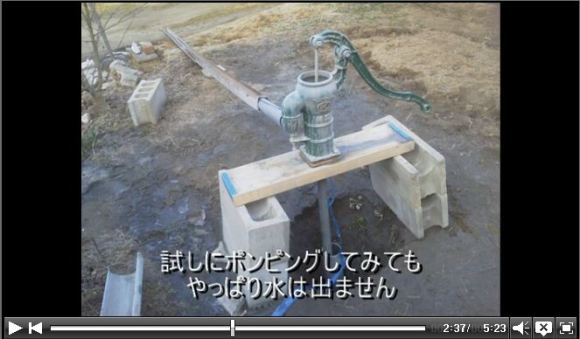
▼After debating for a bit, I was so desperate that I tried to pull up the pipe with my bare strength.
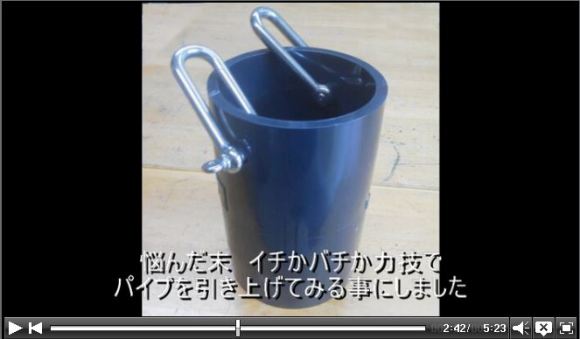
▼I even tried to use a wheel jack and an old tire chain.
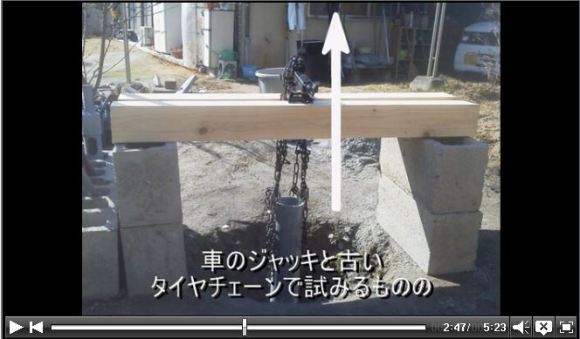
▼…It was a failure. The tire chain gave up on me.
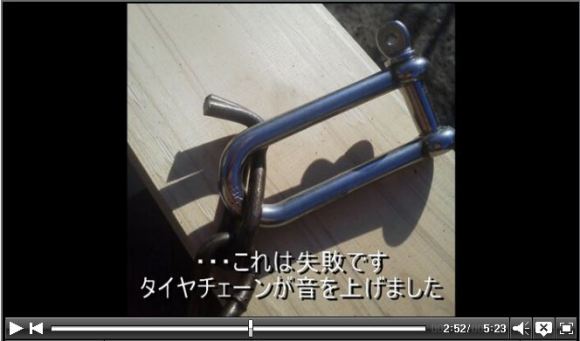
▼Anyway, the 12-meter pipe was still stuck. I powered up by constructing a big lever.
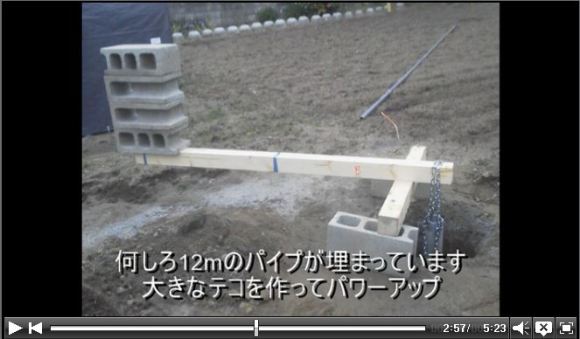
▼In the end, I spent five days struggling to raise the pipe using the lever and all my strength.
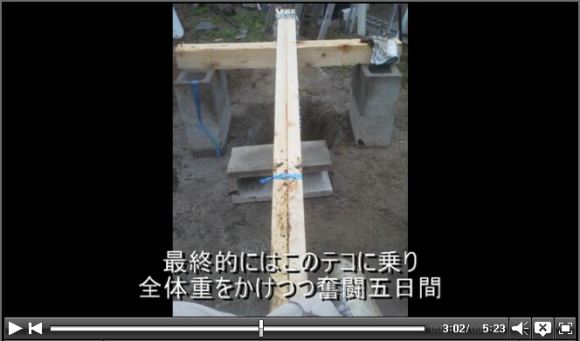
▼Finally, success after managing to pull it up 2 meters! Underground water happily gurgled out of the pump.
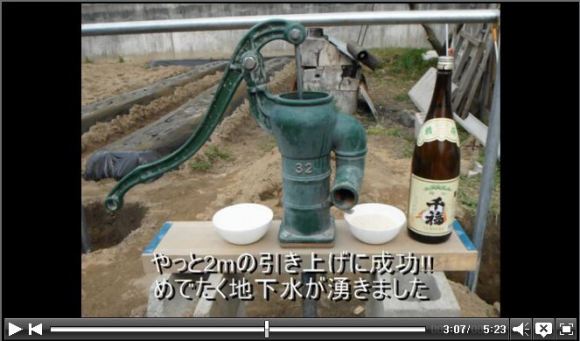
▼In thanks, I prepared an offering of rice, salt, and sake. It took nine months and 40 days of actual labor. The total expenses were 86,400 yen (US$846.72).
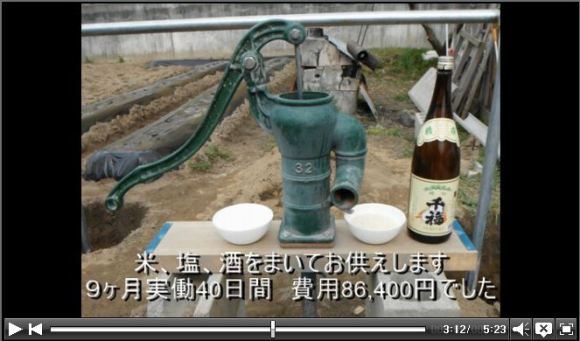
▼But then I became ambitious, and decided to build a little hut for the well.
▼I’ll speed up my explanation. Here are heavy iron pipes for the basic structure.
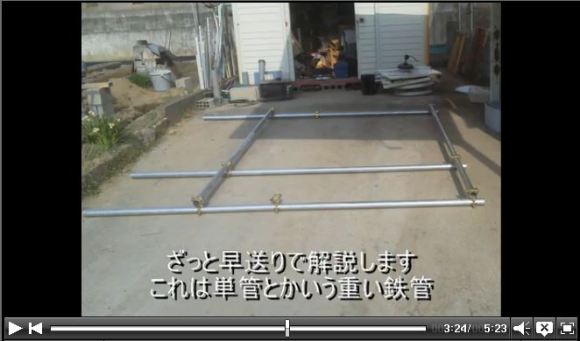
▼I worked really hard to make this shape by myself.
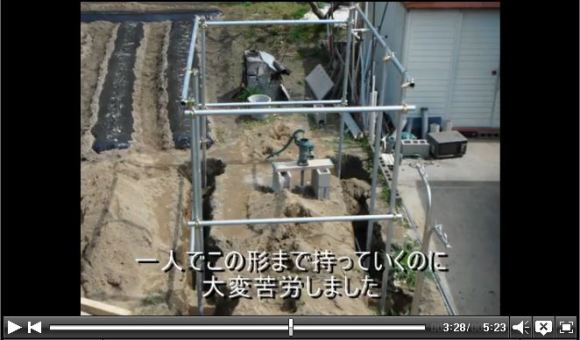
▼I stacked cinder blocks at the base of the structure to protect it from mud on rainy days.
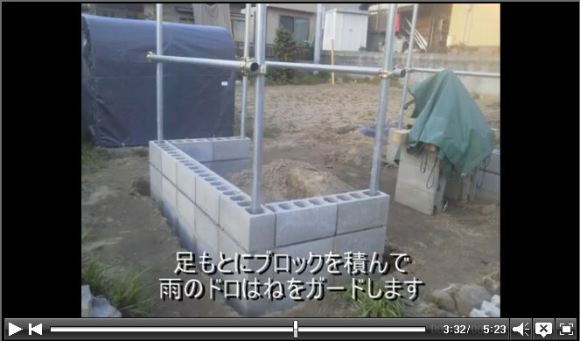
▼The roof preparations are done.
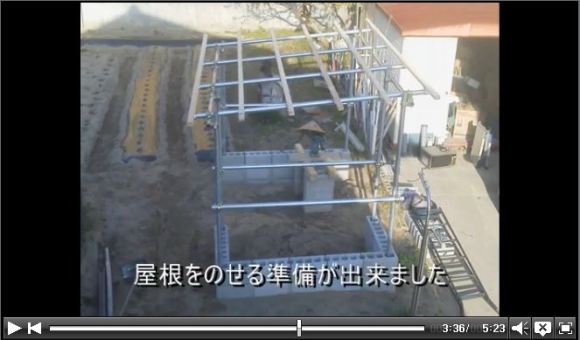
▼I placed corrugated metal sheets on the roof. They will keep out the rain.
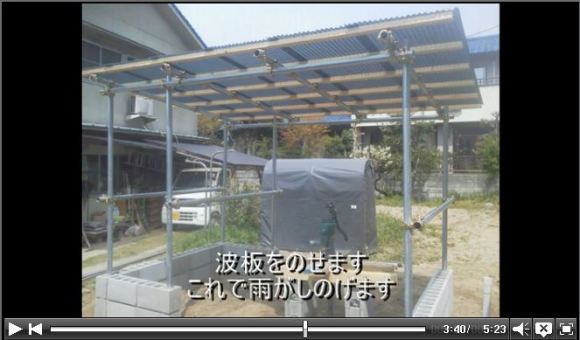
▼I also installed a drainage pipe in the ground.
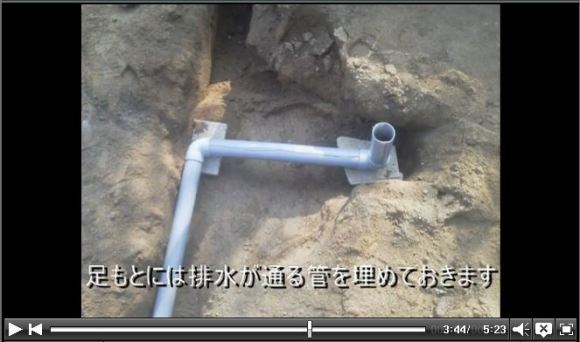
▼I began to construct a vertical faucet.
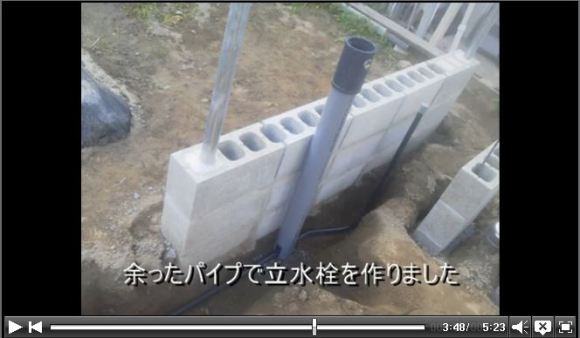
▼Utilizing the water system, it stands vertically.
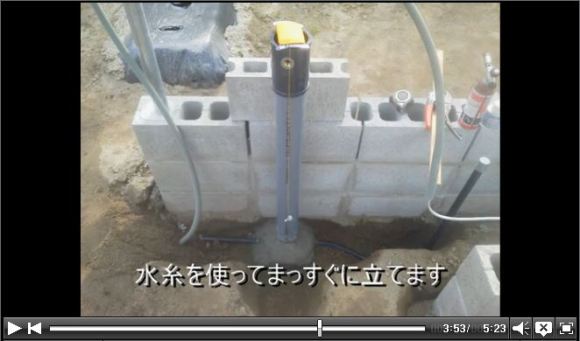
▼Attach an electric pump there…
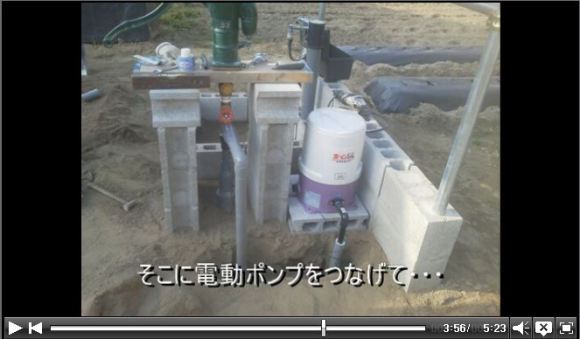
▼…and the faucet is completed. Next, I lined up the cinder blocks to make a drainage area.
▼I poured mortar into the cracks between the blocks.
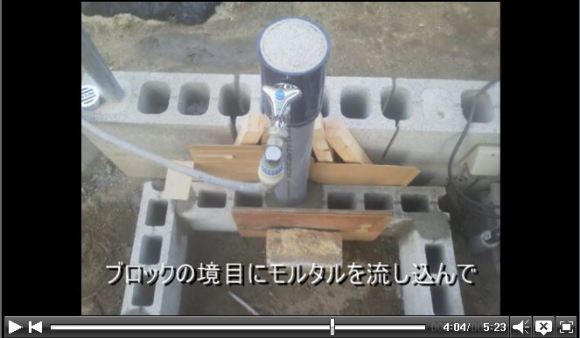
▼I filled in the bottom with a bit of a slant so that water could flow easily.
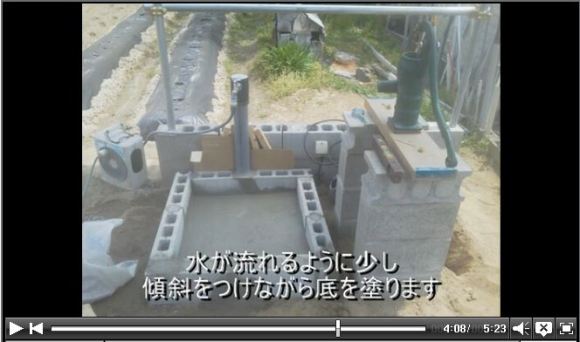
▼I covered the exterior with wooden boards and tried to make a latticed window.
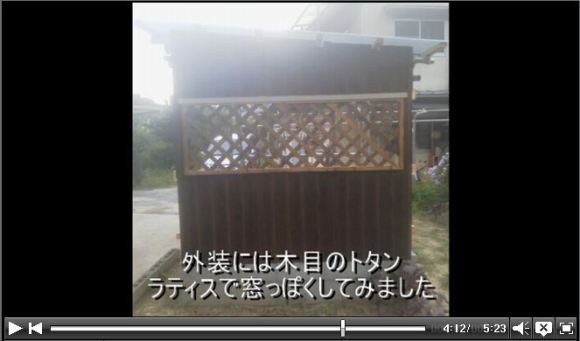
▼I cut the wooden planks by myself and nailed them together.
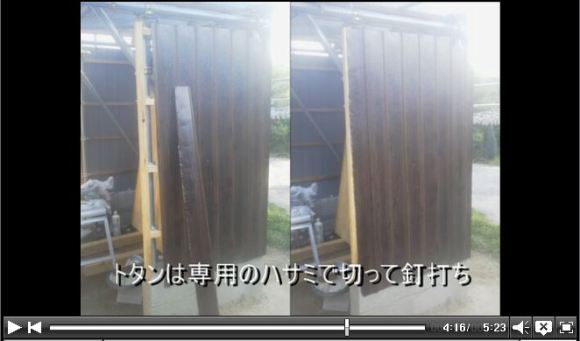
▼The edges are dangerous so let’s cover them up.
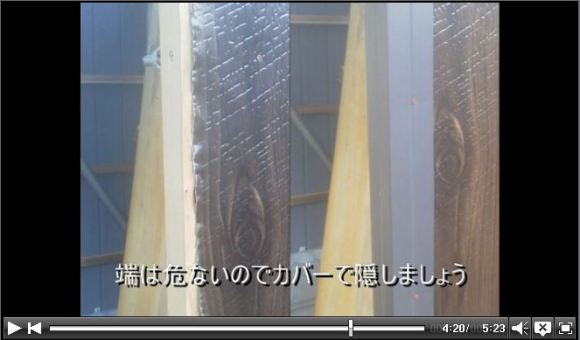
▼This is what the hut looks like from the outside.
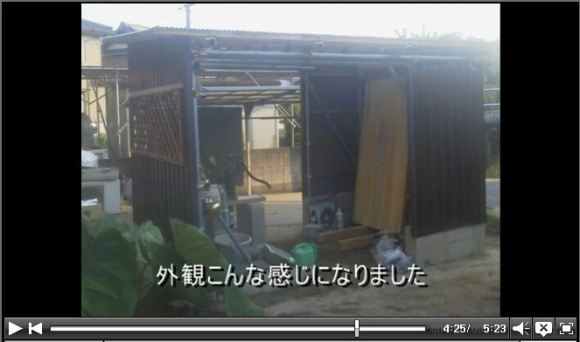
▼I picked the first watermelon of the season to make an offering to the kami (god) of the well.
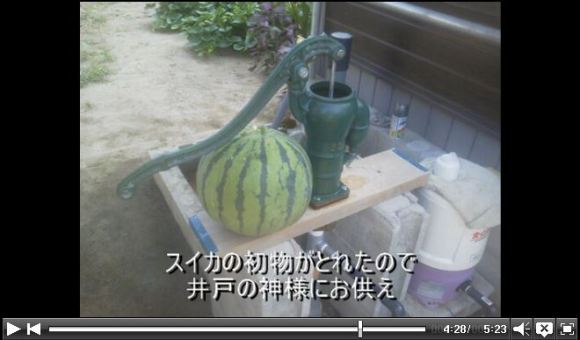
▼Might as well add a gutter, too.
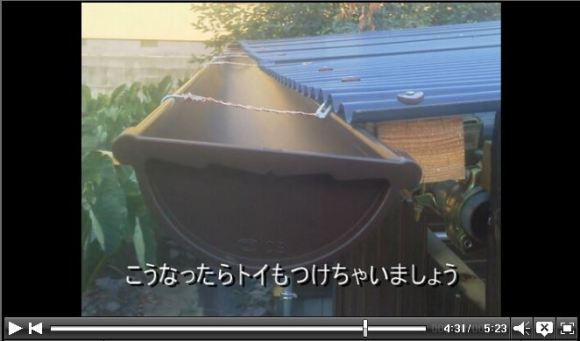
▼A small stone walkway adds the finishing touch.
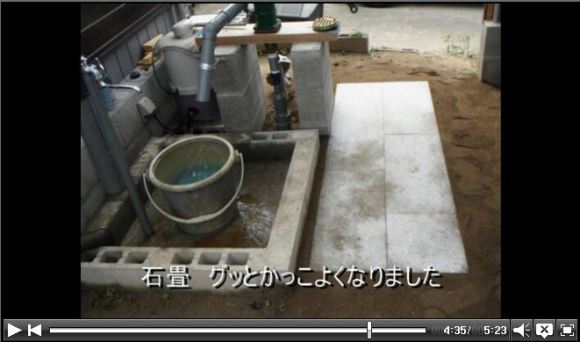
▼It looks like this if you turn around. I prepared a little storage area.
▼It’s complete. There’s plenty of water in the summer. I use it a lot for a plastic pool in the garden.
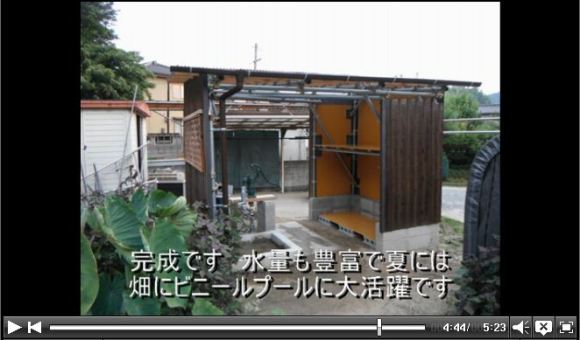
▼So how was all this “digging a well by yourself” business? You too should “let’s challenge [sic]“!
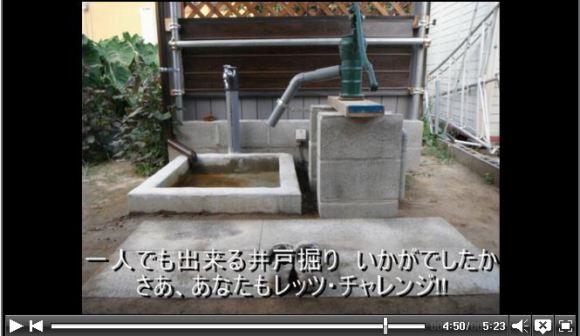
…And there you have it. Okay, who’s ready to go dig up your backyard now?!
Source/Images: Yahoo! Japan


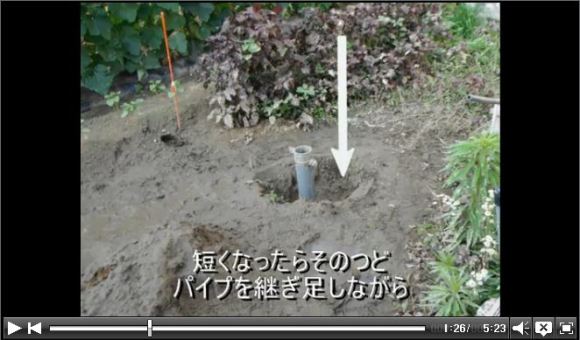
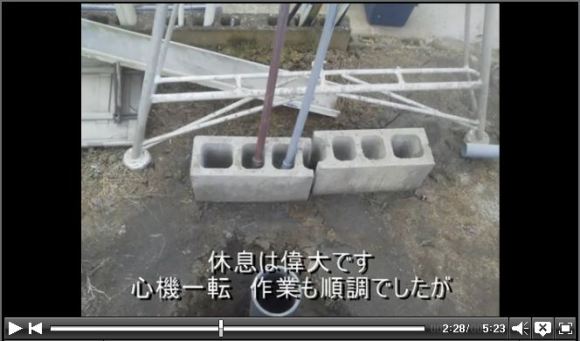
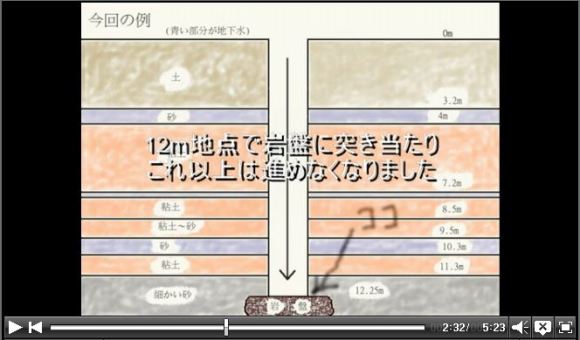
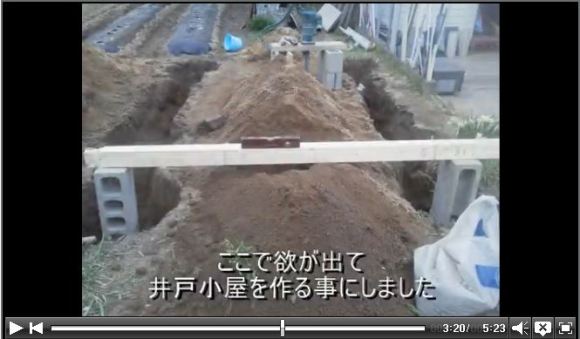
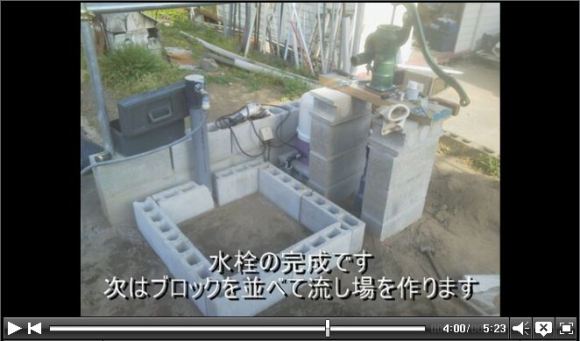
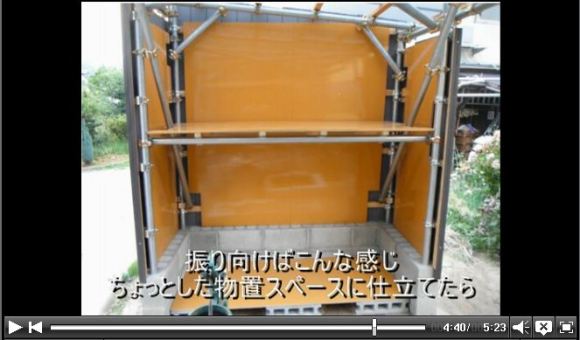
 Ridiculously powerful hot spring bath in Japan earns both our respect and our fear【Videos】
Ridiculously powerful hot spring bath in Japan earns both our respect and our fear【Videos】 Crazy-cheap Japanese apartment for less than 140 bucks a month comes with headaches every day
Crazy-cheap Japanese apartment for less than 140 bucks a month comes with headaches every day Japanese women warned about the dangers of dumping failed Valentine’s Day chocolate down the sink
Japanese women warned about the dangers of dumping failed Valentine’s Day chocolate down the sink Japanese McNuggets now come with creamy corn sauce, we attempt a potage with it
Japanese McNuggets now come with creamy corn sauce, we attempt a potage with it Man vs. Steak: We band together to eat 4.5 kilograms of beef at Ikinari Steak
Man vs. Steak: We band together to eat 4.5 kilograms of beef at Ikinari Steak McDonald’s new Happy Meals offer up cute and practical Sanrio lifestyle goods
McDonald’s new Happy Meals offer up cute and practical Sanrio lifestyle goods All-you-can-drink Starbucks and amazing views part of Tokyo’s new 170 meter-high sky lounge
All-you-can-drink Starbucks and amazing views part of Tokyo’s new 170 meter-high sky lounge Super Nintendo World expansion gets delayed for several months at Universal Studios Japan
Super Nintendo World expansion gets delayed for several months at Universal Studios Japan Studio Ghibli releases new action figures featuring Nausicaä of the Valley of the Wind characters
Studio Ghibli releases new action figures featuring Nausicaä of the Valley of the Wind characters Kyoto’s 100 Demons yokai monster parade returns!
Kyoto’s 100 Demons yokai monster parade returns! More foreign tourists than ever before in history visited Japan last month
More foreign tourists than ever before in history visited Japan last month Studio Ghibli glasses cases let anime characters keep an eye on your spectacles
Studio Ghibli glasses cases let anime characters keep an eye on your spectacles McDonald’s Japan releases a pancake pie for new retro kissaten coffeeshop series
McDonald’s Japan releases a pancake pie for new retro kissaten coffeeshop series Starbucks reopens at Shibuya Scramble Crossing with new look and design concept
Starbucks reopens at Shibuya Scramble Crossing with new look and design concept Arrest proves a common Japanese saying about apologies and police
Arrest proves a common Japanese saying about apologies and police Disney princesses get official manga makeovers for Manga Princess Cafe opening in Tokyo
Disney princesses get official manga makeovers for Manga Princess Cafe opening in Tokyo Beautiful new Final Fantasy T-shirt collection on the way from Uniqlo【Photos】
Beautiful new Final Fantasy T-shirt collection on the way from Uniqlo【Photos】 Is the new Shinkansen Train Desk ticket worth it?
Is the new Shinkansen Train Desk ticket worth it? Foreign English teachers in Japan pick their favorite Japanese-language phrases【Survey】
Foreign English teachers in Japan pick their favorite Japanese-language phrases【Survey】 Japanese convenience store packs a whole bento into an onigiri rice ball
Japanese convenience store packs a whole bento into an onigiri rice ball We try out “Chan Ramen”, an underground type of ramen popular in the ramen community
We try out “Chan Ramen”, an underground type of ramen popular in the ramen community Studio Ghibli releases Kiki’s Delivery Service chocolate cake pouches in Japan
Studio Ghibli releases Kiki’s Delivery Service chocolate cake pouches in Japan Japan’s bone-breaking and record-breaking roller coaster is permanently shutting down
Japan’s bone-breaking and record-breaking roller coaster is permanently shutting down New definition of “Japanese whiskey” goes into effect to prevent fakes from fooling overseas buyers
New definition of “Japanese whiskey” goes into effect to prevent fakes from fooling overseas buyers Our Japanese reporter visits Costco in the U.S., finds super American and very Japanese things
Our Japanese reporter visits Costco in the U.S., finds super American and very Japanese things Studio Ghibli unveils Mother’s Day gift set that captures the love in My Neighbour Totoro
Studio Ghibli unveils Mother’s Day gift set that captures the love in My Neighbour Totoro Foreign passenger shoves conductor on one of the last full runs for Japan’s Thunderbird train
Foreign passenger shoves conductor on one of the last full runs for Japan’s Thunderbird train Domino’s Japan now sells…pizza ears?
Domino’s Japan now sells…pizza ears? New Japanese KitKat flavour stars Sanrio characters, including Hello Kitty
New Japanese KitKat flavour stars Sanrio characters, including Hello Kitty Kyoto creates new for-tourist buses to address overtourism with higher prices, faster rides
Kyoto creates new for-tourist buses to address overtourism with higher prices, faster rides Sales of Japan’s most convenient train ticket/shopping payment cards suspended indefinitely
Sales of Japan’s most convenient train ticket/shopping payment cards suspended indefinitely Sold-out Studio Ghibli desktop humidifiers are back so Totoro can help you through the dry season
Sold-out Studio Ghibli desktop humidifiers are back so Totoro can help you through the dry season Japanese government to make first change to romanization spelling rules since the 1950s
Japanese government to make first change to romanization spelling rules since the 1950s Ghibli founders Toshio Suzuki and Hayao Miyazaki contribute to Japanese whisky Totoro label design
Ghibli founders Toshio Suzuki and Hayao Miyazaki contribute to Japanese whisky Totoro label design Doraemon found buried at sea as scene from 1993 anime becomes real life【Photos】
Doraemon found buried at sea as scene from 1993 anime becomes real life【Photos】 Tokyo’s most famous Starbucks is closed
Tokyo’s most famous Starbucks is closed One Piece characters’ nationalities revealed, but fans have mixed opinions
One Piece characters’ nationalities revealed, but fans have mixed opinions We asked a Uniqlo employee what four things we should buy and their suggestions didn’t disappoint
We asked a Uniqlo employee what four things we should buy and their suggestions didn’t disappoint Princesses, fruits, and blacksmiths: Study reveals the 30 most unusual family names in Japan
Princesses, fruits, and blacksmiths: Study reveals the 30 most unusual family names in Japan Turning a crazy cheap country Japanese house into a home — Step 10: Mysterious water【SoraHouse】
Turning a crazy cheap country Japanese house into a home — Step 10: Mysterious water【SoraHouse】 Fukuoka City aims to resume traffic at site of road collapse less than a week after accident
Fukuoka City aims to resume traffic at site of road collapse less than a week after accident Dip your feet into some Fondue Slippers
Dip your feet into some Fondue Slippers Underground pipe explodes, creates a 10-metre man-made geiser in Kanagawa Prefecture
Underground pipe explodes, creates a 10-metre man-made geiser in Kanagawa Prefecture Japanese YouTuber sticks rubber chicken in tailpipe, unleashes screams from bowels of hell 【Vid】
Japanese YouTuber sticks rubber chicken in tailpipe, unleashes screams from bowels of hell 【Vid】 Hamburg and Hamburg Shibuya: A Japanese restaurant you need to put on your Tokyo itinerary
Hamburg and Hamburg Shibuya: A Japanese restaurant you need to put on your Tokyo itinerary Trash to treasure: Incredible motorised steampunk goggles are made out of nothing but spare parts
Trash to treasure: Incredible motorised steampunk goggles are made out of nothing but spare parts Osaka earthquake: Scenes show damage from strongest tremor to hit the region in decades
Osaka earthquake: Scenes show damage from strongest tremor to hit the region in decades Obama appears in small Kyushu town, possibly seeking treatment for aggressive skin disease
Obama appears in small Kyushu town, possibly seeking treatment for aggressive skin disease Nissin Cup Noodle is offering a promotional life-size water-dispensing cow
Nissin Cup Noodle is offering a promotional life-size water-dispensing cow How to make tonkotsu ramen at home 【SoraKitchen】
How to make tonkotsu ramen at home 【SoraKitchen】 Our reporter devises the best way to beat the summer heat: by eating somen in an outdoor shower
Our reporter devises the best way to beat the summer heat: by eating somen in an outdoor shower Hey, Croatian taxi driver! Take us to the restaurant with the best štrukli in Zagreb
Hey, Croatian taxi driver! Take us to the restaurant with the best štrukli in Zagreb Universal Studios Japan starts Super Mario Sunshine-style “soaking wet” Power Up Summer event
Universal Studios Japan starts Super Mario Sunshine-style “soaking wet” Power Up Summer event Creepy creatures from the seabed that you can eat!【Taste Test】
Creepy creatures from the seabed that you can eat!【Taste Test】
Leave a Reply